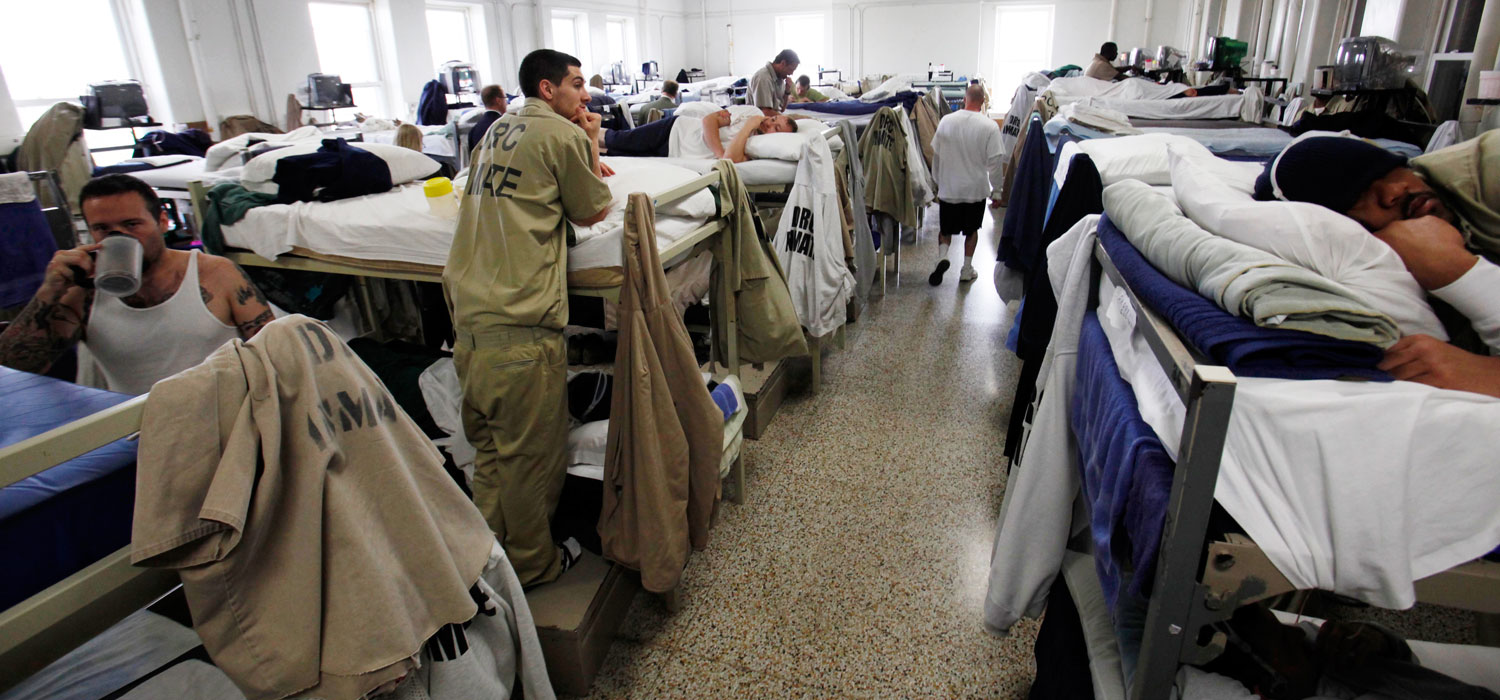
<p>A room full of inmates are seen in their bunk beds at Southeastern Correctional Institution Wednesday, April 22, 2009 in Lancaster, Ohio. Ohio's prisons are at 130 percent capacity and space is squeezing tighter by the day, says prisons director Terry Collins. It's a nationwide problem as the economy escalates crime-causing tensions, worrying prison directors who must contend with the discomfort, violence, facility fatigue and lack of adequate programming staff. Photo by Kiichiro Sato/AP</p>
Earlier this month, Valerie Jarrett, senior advisor to President Obama, stated that the administration doesn't have enough resources to review all the petitions for clemency that have come through its doors. While the president has granted clemency to 174 people in federal prison since he announced his initiative to commute lengthy sentences for people in federal prison for nonviolent drug offenses, over 9,000 petitioners are still awaiting a response.
Reviewing those petitions doesn't come cheap. The budget for the Office of the Pardon Attorney, the part of the Department of Justice responsible for overseeing the clemency process, came in at $3.9 million last fiscal year. And there are plans to spend even more before the president leaves office.
But while clemency is expensive, leaving people in prison for unnecessarily long sentences costs the federal government even more and denies people in prison a second chance at becoming productive citizens. To ensure people in federal prison have a fair shot of earning a reduced prison term, we need a “second look” judicial process to standardize the review of lengthy sentences.
How much will clemencies granted by President Obama save?
Shortening the prison sentences of people who don’t necessarily need to be in prison can save a lot of money. Based on information from the Office of the Pardon Attorney, the 174 people who have received clemency since the start of the president’s initiative will have served an estimated total of 2,068 fewer years in prison than if all their sentences had remained intact. When multiplied by the marginal cost of incarcerating one person in the federal system ($10,994 per year), that adds up to nearly $23 million in estimated savings to the federal government over the coming decades.
That number is more than the total budget for the Office of the Pardon Attorney since the start of the initiative. And this estimate doesn’t even take into account the increased costs for imprisoning people who are aging and thus may require costly medical care.
Further still, the calculation also does not consider the benefits to society and families when people incarcerated in prisons return home and have the opportunity to be productive parents, community members, and taxpayers.
Let's give people a second look
Given the long-term savings associated with reducing the prison population through the use of clemency, the president should stay true to his wish to use his clemency powers more expansively than his predecessors over his last year in office.
But to be fair, the current administration is not incentivized to invest upfront costs in reviewing clemency petitions. An administration in its final year will never see the savings that will accrue over the next few decades. This monetary disincentive underscores the need to create a standardized process for reviewing lengthy sentences that is better insulated from budgetary pressures.
Criminal justice experts from both sides of the aisle have advocated for the idea of a judicial "second look" mechanism, in which individuals who have served significant portions of lengthy sentences are eligible for resentencing before a judge.
The congressionally mandated and bipartisan Charles Colson Task Force on Federal Corrections included a "second look" judicial review process as one of its key recommendations for federal corrections reform in its recently released report. And last month, Stefan R. Underhill, a federal judge for the District of Connecticut, also argued for a "second look" mechanism in The New York Times. A judicial “second look” process would standardize the review of lengthy sentences and produce long-term savings for taxpayers.
Clemency is an important presidential power to remedy lengthy sentences. But the limitations of the president’s initiative have shown that the clemency process isn’t enough to ensure that people serving unnecessarily long sentences have a chance at another look, even when reducing sentences can mean saving money. A “second look” mechanism could surmount those limitations and give each person with a lengthy sentence a fair shot at a second chance.
Let’s build a future where everyone, everywhere has the opportunity and power to thrive
Urban is more determined than ever to partner with changemakers to unlock opportunities that give people across the country a fair shot at reaching their fullest potential. Invest in Urban to power this type of work.